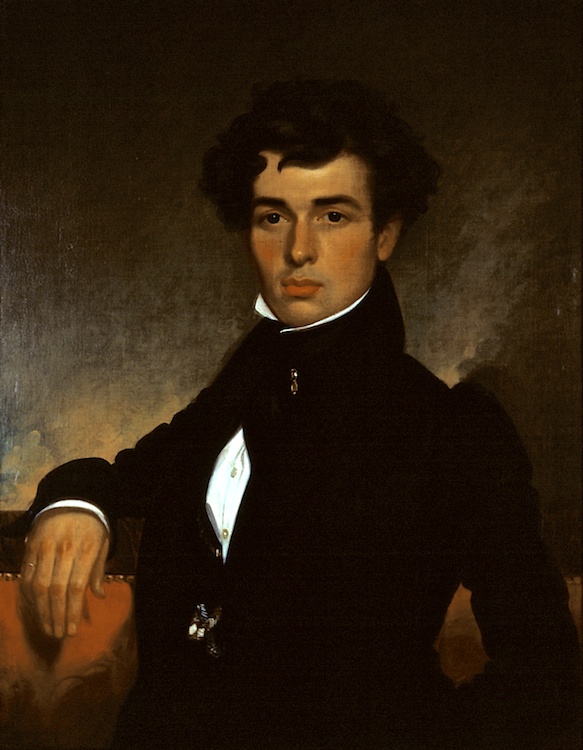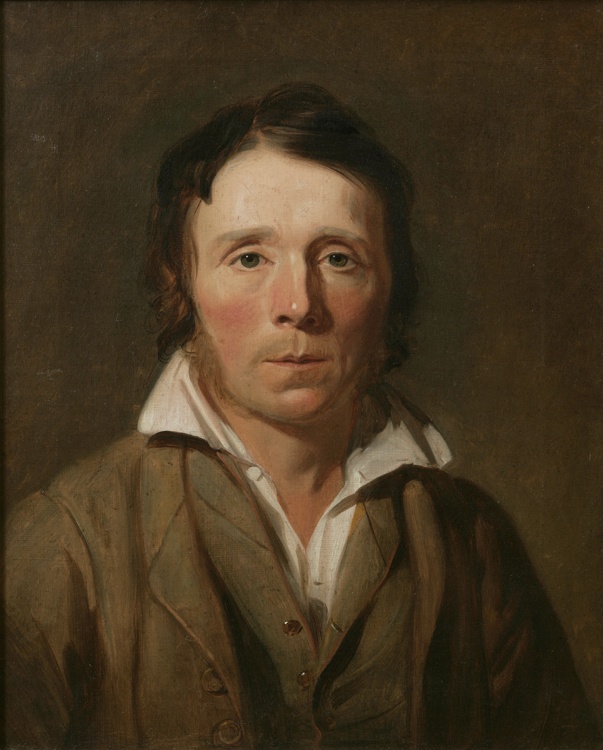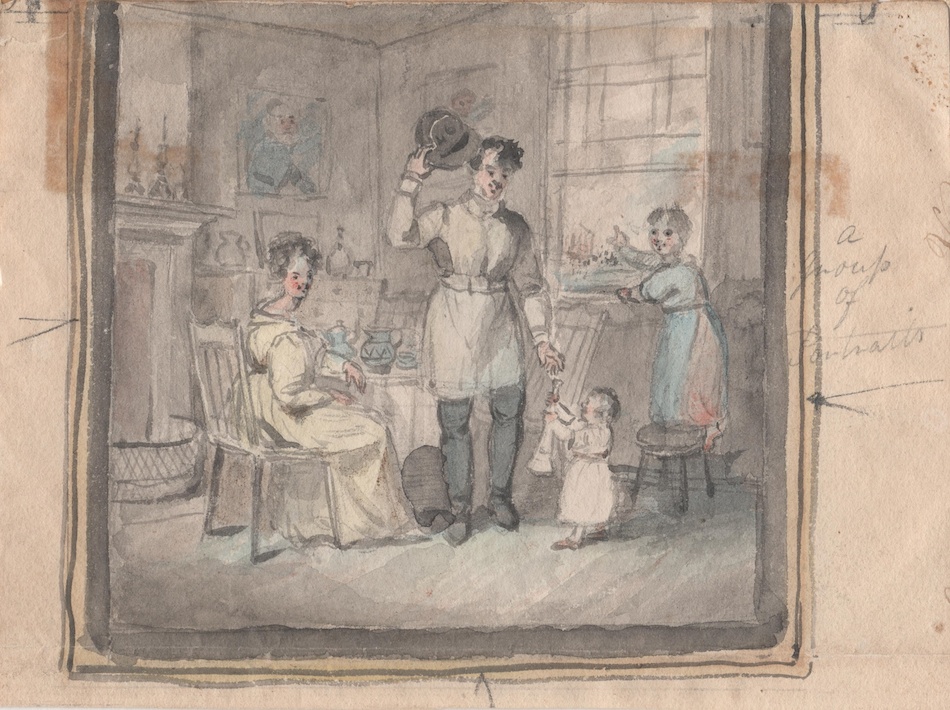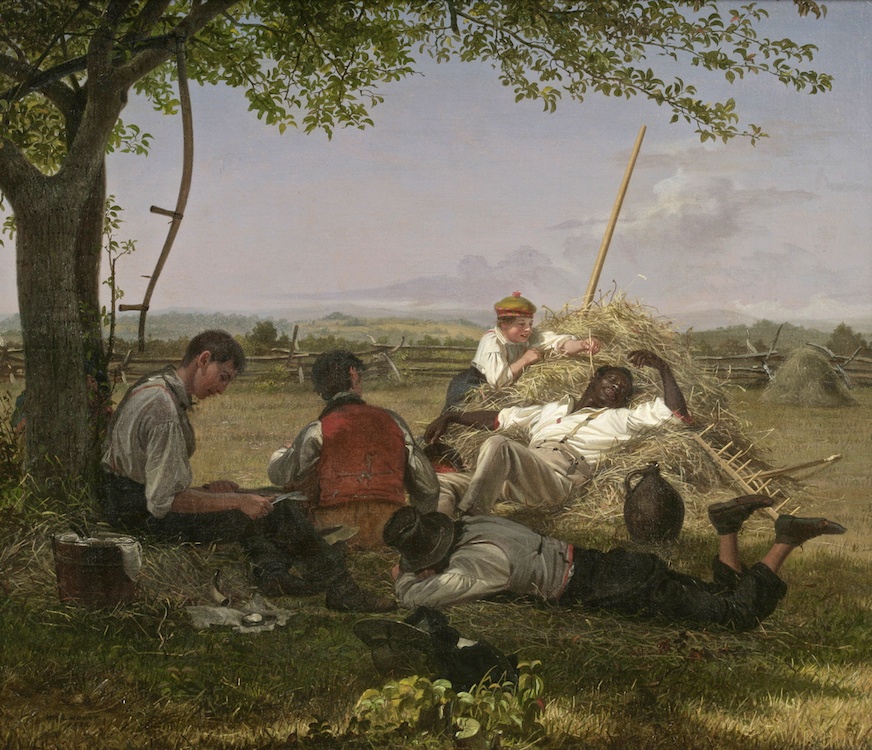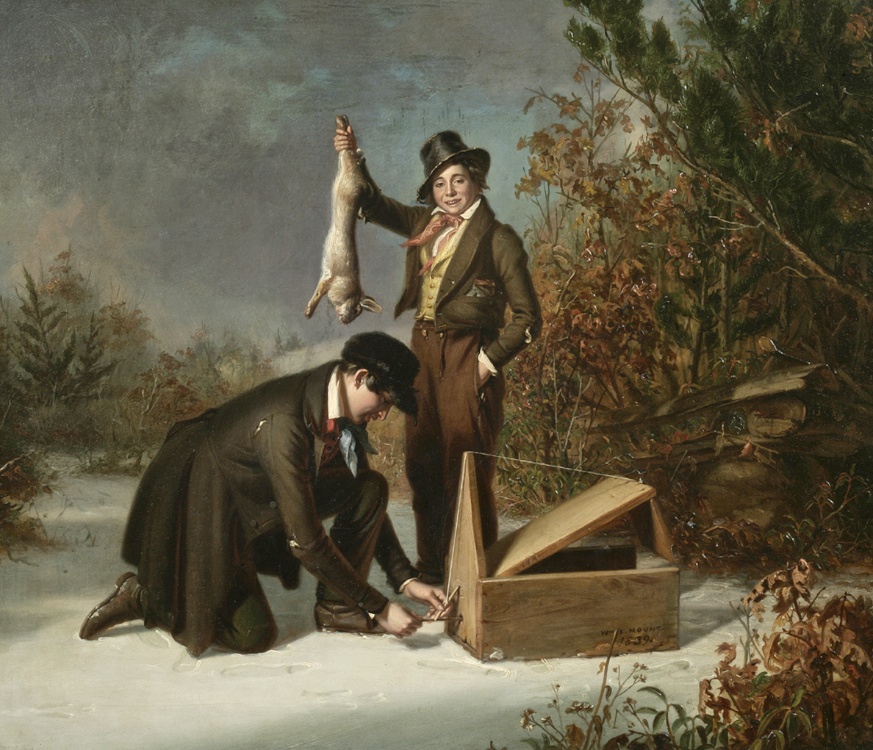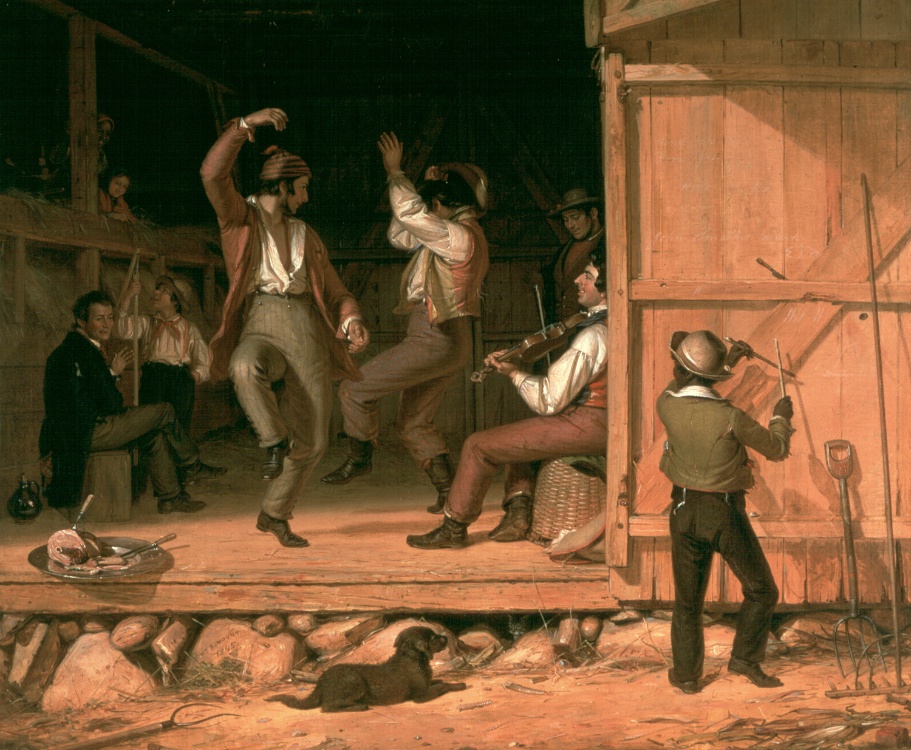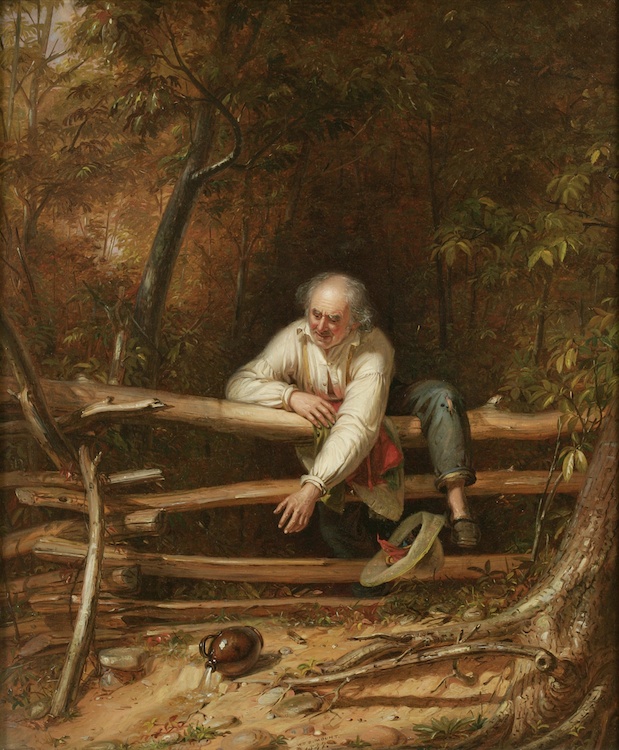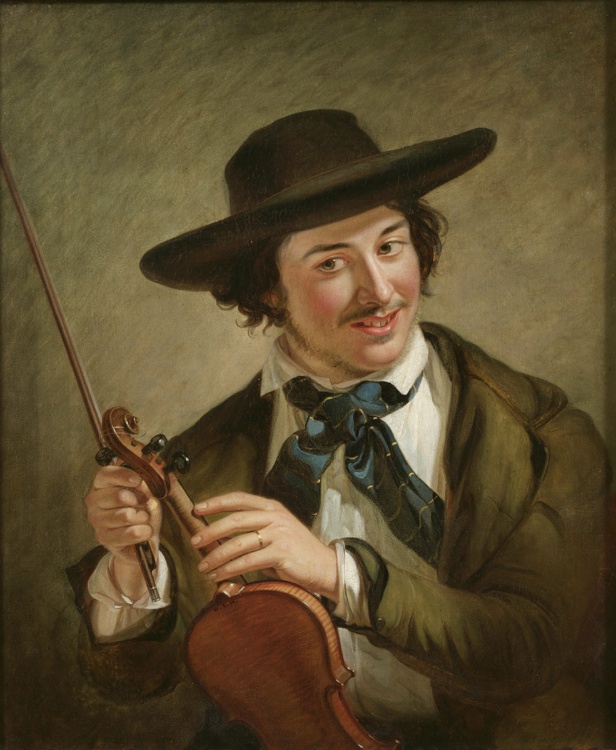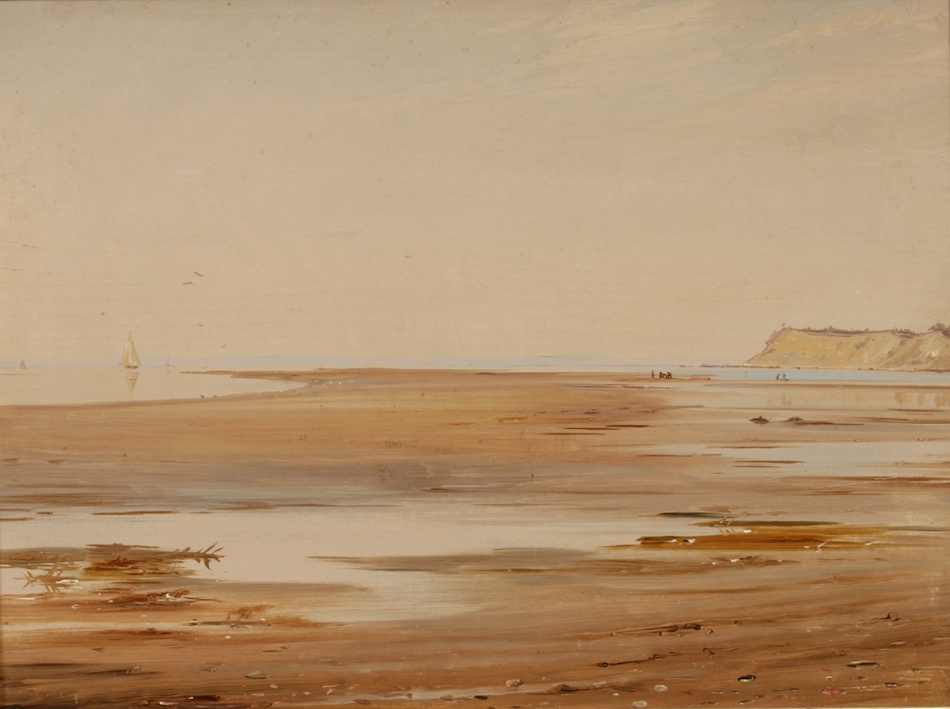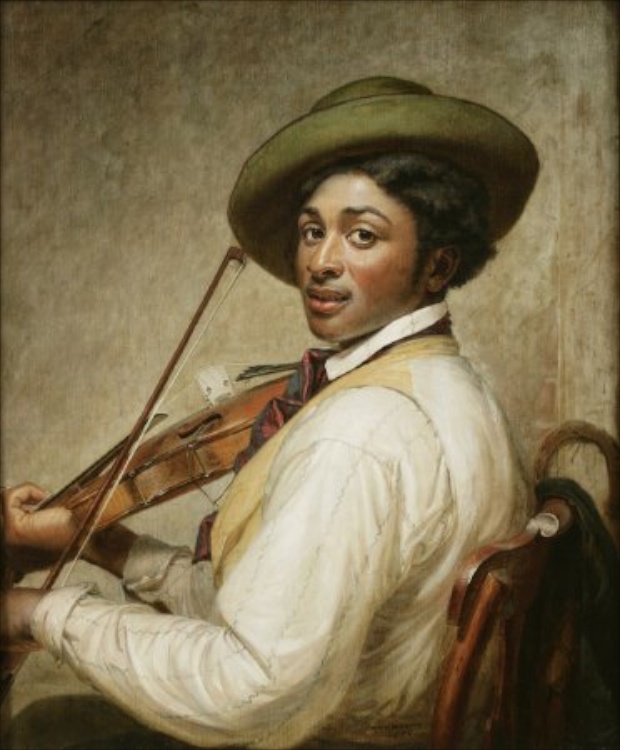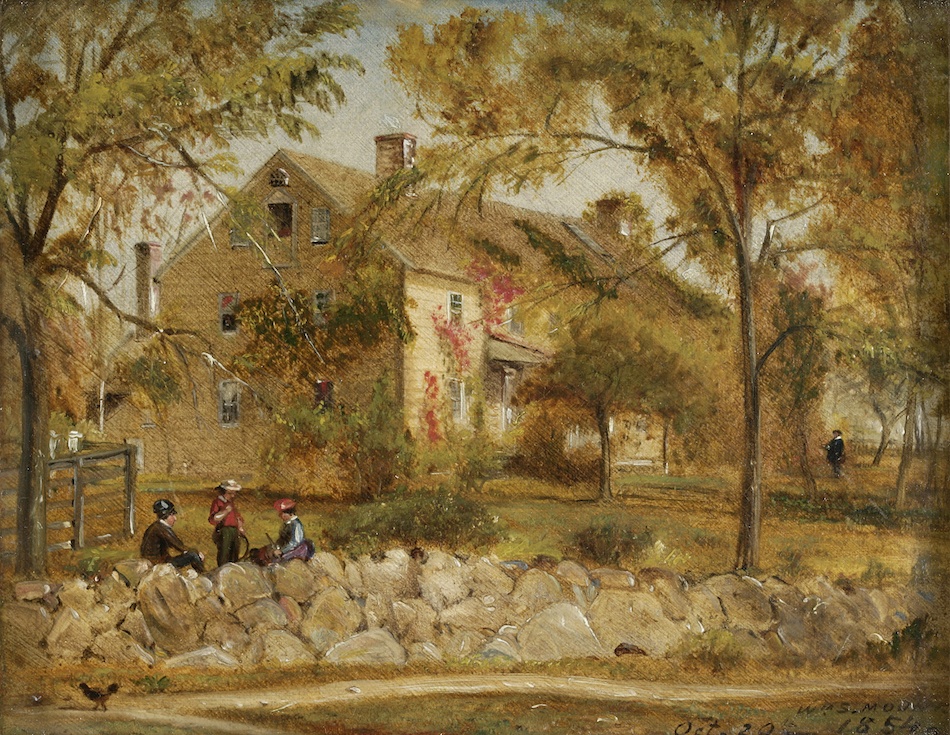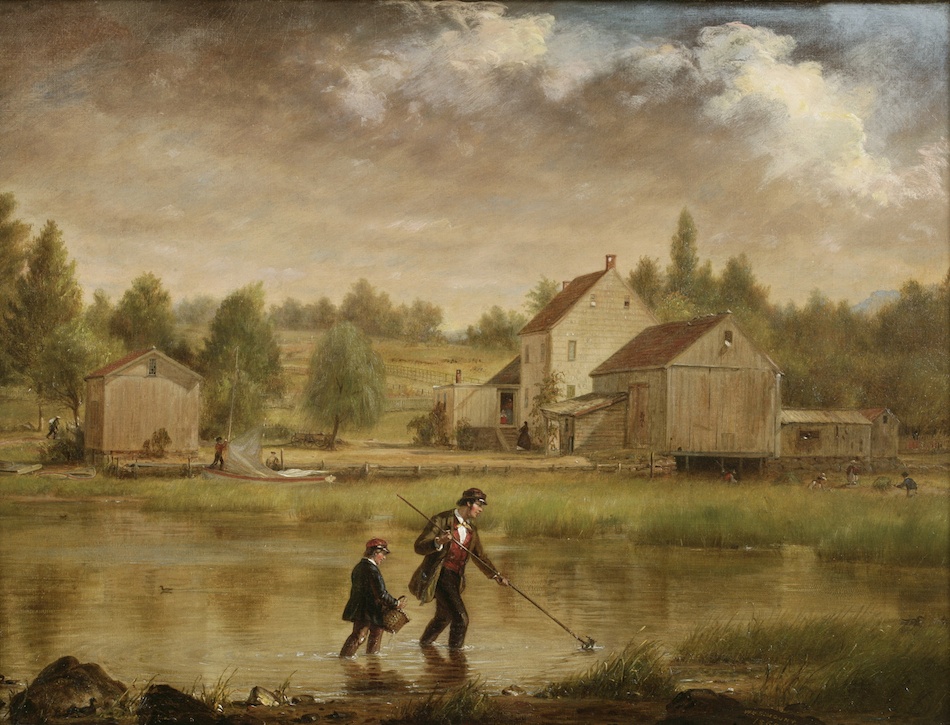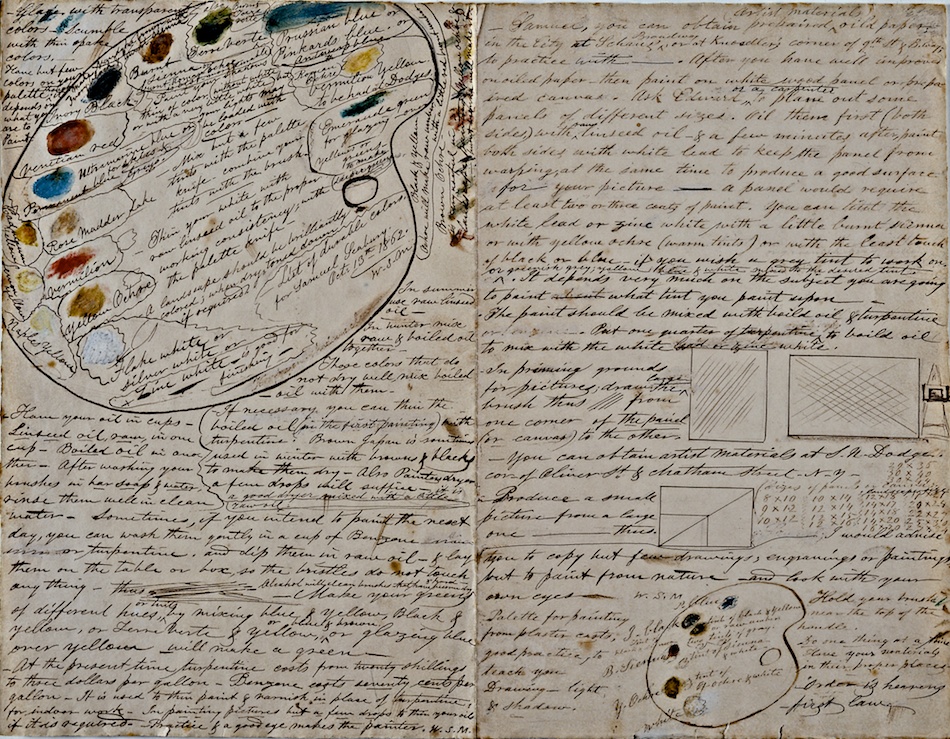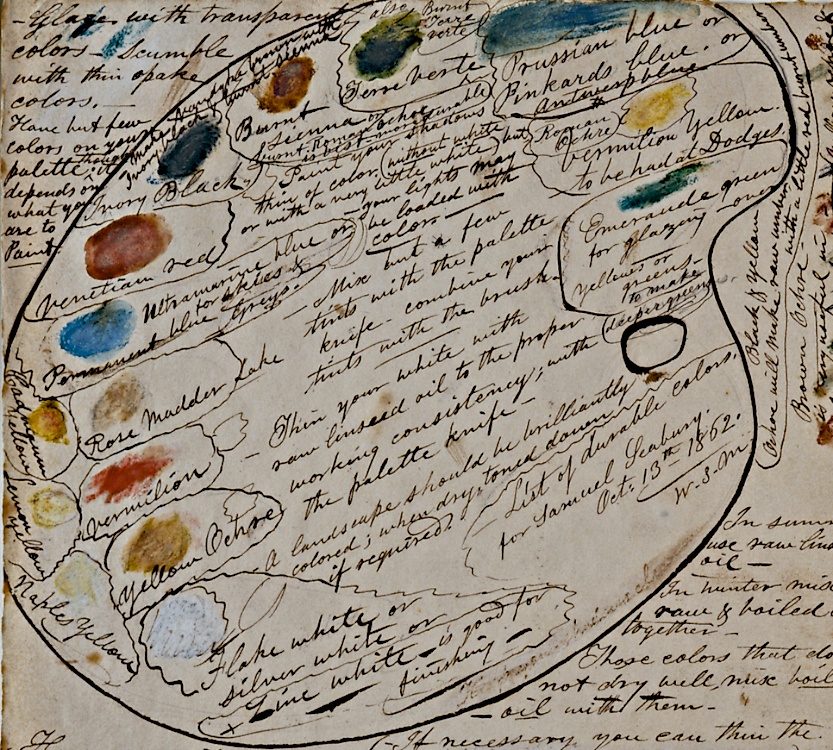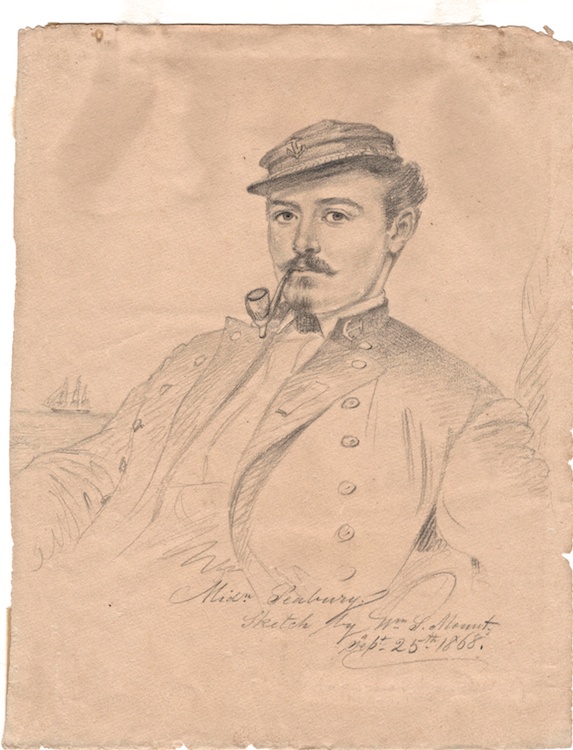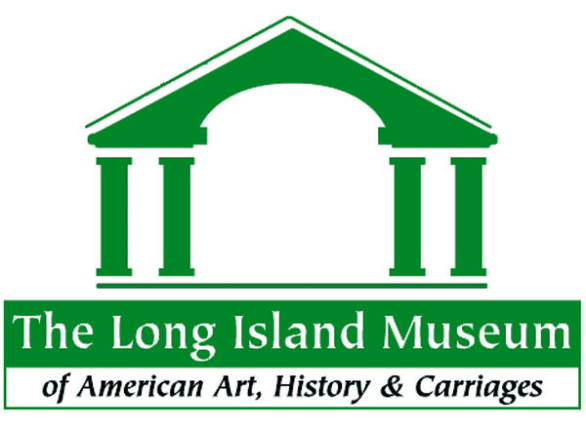WILLIAM SIDNEY MOUNT
American Genre-Painter
The Long Island Museum
Stony Brook, New York
“Ideas can be found in everything if the poet, sculptor and painter can pick them out.” — Mount Diary/Journal.
William Sidney Mount (1807–1868) was born in Setauket and as a young boy moved, along with his brothers and sister, to nearby Stony Brook with his widowed mother, to live with her extended family. He studied painting in New York City at the National Academy of Design, the nation’s foremost art school, where his work was exhibited throughout his career.
In his early years, Mount primarily painted works with historical and literary themes. In 1829 the artist began to paint portraits and scenes from everyday life, or genre paintings. Mount’s scenes of rural life immediately became popular, both in the United States and abroad. By the middle of the nineteenth century, he was one of the most renowned artists in America, with more commissions than he could fulfill.
While Mount had several opportunities to study abroad, he always declined, maintaining a strong nationalistic pride. He felt that such a trip might hamper his efforts to speak directly and simply to his fellow Americans through his genre paintings. Most of his famous works were created in Stony Brook.
All images are property of the Long Island Museum and may not be duplicated.
William Sidney Mount. Dancing on the Barn Floor, 1831. Oil on canvas. 24 5/8 x 29 5/8. Gift of Mr. and Mrs. Ward Melville, 1955. Copyright The Long Island Museum.
“Mount shows his mastery of technique in his depiction of the human body and its movement. The girl merrily swings her lifted skirt, the folds of which clearly define her body. The young man’s expression of cheerful anticipation beckons the viewer to join in the dance….In this painting, Mount confronted the problem of the definition of space and depth, particularly in the barn’s interior. His artistic solution…was to arrange groups of figures to describe the interior space…Mount would make repeated use of this solution in later compositions.” — William Sidney Mount by David Cassedy & Gail Shrott. The Museums at Stony Book, publishers, 1983, p. 42.
William Sidney Mount. Portrait of Henry Smith Mount, 1831. Oil on canvas. 34 1/2 x 27 1/4. Bequest of Ward Melville, 1977. Copyright The Long Island Museum.
“This 1831 portrait of his eldest brother demonstrates William Sidney Mount’s steadily increasing skill as a portraitist….(In this likeness, Mount) produces a rounder, more academic figure that shows the artist’s self-assurance and skill in the application of paint and the three-dimensional representation of the human form….In this portrait, the dashing subject’s facial expression suggests deep absorption in thought, and the flash of bright colors in the dark background lends mystery to the figure of the brooding subject.
“Henry Smith Mount (1802 – 1841) took his brother William as an apprentice in his sign and ornamental painting shop in 1824. It soon became evident that young William had great potential as an artist. Henry, who was an artist in his own right and became an Associate of the National Academy of Design in 1828, apparently encouraged his brother to pursue an artistic career….Henry’s always frail health forced him to leave his sign shop and to return to Stony Brook a few years before his death. William demonstrated his abiding affection for Henry in the sensitivity with which he executed this portrait….” — William Sidney Mount by David Cassedy & Gail Shrott. The Museums at Stony Book, publishers, 1983, p. 45.
William Sidney Mount. Self Portrait, 1832. Oil on canvas. 24 x 20. Gift of Mr. and Mrs. Ward Melville, 1950. Photo by Paul Kiehart. Copyright The Long Island Museum.
William Sidney Mount. Portrait of Reuben Merrill, 1832. Oil on canvas. 21 1/2 x 17 1/8. Inscription on reverse: Portrait of Reuben / English Farm Hand / At the Seabury’s, Stony Brook, N.Y. Inscription: Painted by Wm. S. Mount, Sept. 25, 1832. Museum Collections. Copyright The Long Island Museum.
“Very little is actually known about Reuben Merrill. He was an Englishman who is believed to have worked either as a gardener or as a field hand for Mount’s sister Ruth and her husband Charles Saltonstall Seabury….Merrill’s sympathetic eyes and pensive expression suggest that he was an earnest man whom Mount knew as well as he knew the fields of Stony Brook.” William Sidney Mount by David Cassedy & Gail Shrott. The Museums at Stony Book, publishers, 1983, p. 46.
William Sidney Mount. Long Island Farmer Husking Corn, 1834. Oil on canvas. 21 x 17 1/8. Gift of Mr. and Mrs. Ward Melville, 1975. Copyright The Long Island Museum.
“Ten years after Mount executed this work, Seba Smith, one of the nineteenth century America’s foremost humorist, wrote the following commentary in the 1844 issue of the popular publication, The Wintergreen: ‘This ere picter is as much like Uncle Joshua, when he was about forty-five year old, as two peas in a pod. And well it may be, for it was drawed from real life; and there aint no more nateral picters in the world, than them that’s drawed from nater.’ ” — William Sidney Mount by David Cassedy & Gail Shrott. The Museums at Stony Book, publishers, 1983, p. 51.
William Sidney Mount, The Sportsman’s Last Visit, 1835. Oil on canvas. 21 1/2 x 17 1/2. Gift of Mr. and Mrs. Ward Melville, 1958. Copyright The Long Island Museum.
“The Sportsman’s Last Visit reveals nineteenth century Americans’ growing awareness that there was a broadening difference in manners between urban and rural dwellers. As the nation’s larger cities became centers of increasing wealth and industry, city dwellers began to adopt an air of cultural superiority over their rural neighbors….Mount astutely contrasts the genteel elegance of the city gentleman to the clumsy awkwardness of the intruding rural suitor who is forced to abandon his claim to the lady.” — William Sidney Mount by David Cassedy & Gail Shrott. The Museums at Stony Book, publishers, 1983, p. 55.
William Sidney Mount. The Volunteer Fireman, c. 1835. Watercolor on paper. 4 x 4 7/16. Bequest of Ward Melville, 1977. Copyright The Long Island Museum.
“The Volunteer Fireman….depicts an interior with four figures….A young child gleefully points to a fire just visible in the distance as her father calmly prepares to attend to his public duties. In this watercolor the artist documents both a nineteenth century household’s interior and a nineteenth century fireman’s uniform.” — William Sidney Mount by David Cassedy & Gail Shrott. The Museums at Stony Book, publishers, 1983, p. 85.
William Sidney Mount. Farmers Nooning, 1836. Oil on canvas. 20 1/4 x 24 1/4. Gift of Mr. Frederick Sturges, Jr., 1954. Copyright The Long Island Museum.
“Mount, who refused to study in Europe, a course taken by many of his contemporaries, chose instead to train himself to focus on the subtlety and beauty of his natural surroundings….(In 1866) Mount wrote in his ‘Catalogue of portraits and pictures’ …’When I occasionally refer back and remember the progress I made form 1827 to 1838 as one of the first that painted directly from nature (that I had ever heard of), it stimulates me to stick to nature as a short road to perfection.'” William Sidney Mount by David Cassedy & Gail Shrott. The Museums at Stony Book, publishers, 1983, p. 53.
William Sidney Mount. Portrait of Jedediah Williamson, c. 1837. Oil on panel. 16 1/4 x 13 1/2. Bequest of Ward Melville, 1977. Copyright The Long Island Museum.
“Mount’s 1837 Portrait of Jedediah Williamson is a sensitive depiction of a ten-year-old boy. It differs from the artist’s portraits in that it is what Mount called a painting “after death.” During the nineteenth century, it was not uncommon for patrons to commission portraits of deceased family members in an attempt to memorialize them. The practice of painting portraits after death often provided a source of steady income for struggling American artists….The oil portrait of Jedediah Williamson provides a frontal view of the young boy….Mount concentrated his efforts on a careful rendering of the boy’s facial features. The boy looks serenely into the unidentifiable distance. While he paid close attention to the boy’s features, Mount painted the boy’s clothing with broad brushstrokes. Mount charged the Williamson family fifteen dollars for the painting. According to William Williamson’s account book, they paid the artist for his work in goods and services between 1838 and 1839.” — William Sidney Mount by David Cassedy & Gail Shrott. The Museums at Stony Book, publishers, 1983, p. 49.
William Sidney Mount, Catching Rabbits, 1839. Oil on Panel. 18 1/4 x 21 3/8. Signed Wm S. Mount. Gift of Mr. and Mrs. Ward Melville, 1958. Copyright The Long Island Museum.
“‘There is character and body in every part of this Long Island scene–in the snow–in the footprints–in the foliage–in the experienced precision and care with which the elder of the boys re-sets his “figure four” and in the satisfied good humor of the other who is hefting the solid evidence of their success. As a whole it is the best of his works. There is no accident or forced drawing about it. He has evidently gone to his easel to paint what he thought, not to think what to paint….'” Reviewer’s comment, as quoted in William Sidney Mount by David Cassedy & Gail Shrott. The Museums at Stony Book, publishers, 1983, p. 57.
William Sidney Mount, Dance of the Haymakers, 1845. Oil on canvas. 24 1/2 x 29 7/8. Gift of Mr. and Mrs. Ward Melville, 1950. Copyright The Long Island Museum.
“The finished version of Dance of the Haymakers is composed of figures whose vigorous movements and gestures unite harmoniously to focus on the activity in the barn. The artist conceived the painting in geometric terms: he balanced the horizontal barn floor and the vertical door boards with the diagonal lines in the barn’s interior formed by the fiddle and the dancers’ limbs. Mount skillfully creates the illusion of the barn’s weathered wood, replete with knotholes and splinters. The scene almost vibrates with the rollicking energy of the dancers and the rhythm of the fiddler and his young accompanist.” — William Sidney Mount, David Cassedy & Gail Shrott. The Museums at Stony Book, publishers, 1983, p. 63.
William Sidney Mount, Loss and Gain, 1847. Oil on canvas. 24 x 20. Bequest of Ward Melville, 1977. Copyright The Long Island Museum.
“….To come square to the point with you my dear friend–I must tell you that liquor drinking is a nuisance….Drinking causes one to be stupid, and to lose ambition about business, and indifference about personal appearance….As for myself, I have drilled my will power so, for the past year–that I can sit and look at bottles without any inclination to drink.” — William Sydney Mount, Letter to James Baxter, April, 1857. — William Sidney Mount by David Cassedy & Gail Shrott. The Museums at Stony Book, publishers, 1983, p. 59.
______________________
“How glorious it is to paint in the open fields, to hear the birds singing around you, to draw in the fresh air – how thankful it makes one.” — William Sidney Mount, May, 1848.
“The canopy of heaven is the most perfect paint room for an artist.” — William Sidney Mount, December 29, 1848.
_______________________
William Sidney Mount, Just in Tune, 1849. Oil on canvas. 29 1/2 x 24 5/8. Gift of Mr. and Mrs. Ward Melville. Copyright The Long Island Museum.
Letter to William Sidney Mount from William Schaus, an agent for Goupil, Vibert & Company, November 9, 1849: “You say that You are pleased to know that I would like Your “Just in Tune!” for the new gallery, but can I obtain it?….It would afford me the UTMOST pleasure to have this picture, because it is a real gem in every respect.” As quoted in William Sidney Mount by David Cassedy & Gail Shrott. The Museums at Stony Book, publishers, 1983, p. 69.
William Sidney Mount. Crane Neck Across the Marsh. Oil on panel. 12 7/8 x 17. Gift of Mr. and Mrs. Carl Heyser, Jr., 1961. Copyright The Long Island Museum.
“Mount bathes this scene at Crane Neck Point on the north shore of Long Island in a soft blonde light. He uses subtle colors, cool light and a horizontal expanse of sand to evoke a sense of quietude. These artistic devices are often closely associated with luminism, an American landscape painting movement that thrived in the years between 1855 and 1875, and drew from such sources as traditional marine painting (in its earliest phases) and English painter J.M.W. Turner’s evocative atmospheric effects (in his later phase).” William Sidney Mount by David Cassedy & Gail Shrott. The Museums at Stony Book, publishers, 1983, p. 75.
William Sidney Mount. Right and Left, 1850. Oil on canvas. 30 1/8 x 25 1/4. Museums Collection. Copyright The Long Island Museum.
“This painting met with great critical acclaim: ‘This latest fruit of the genius of the artist, of whom the country is so justly proud, we confidently predict must make a hit. It is conceived with great spirit and truth of nature….He (the fiddler) is indeed a chef d’oeuvre of Ethiopian portraiture, and holds and instrument in his hand worthy of the Ole Bull of native fiddlers….‘ [The Ole Bull to whom the critic referred was a renowned Norwegian violinist who thrilled American audiences on five tours of the United States he made between 1843 and 1879].” — William Sidney Mount by David Cassedy & Gail Shrott. The Museums at Stony Book, publishers, 1983, p. 71.
William Sidney Mount. California News, 1850. Oil on canvas. 21 1/2 x 20 1/4. Gift of Mr. and Mrs. Ward Melville, 1955. Copyright The Long Island Museum.
“Mount fills California News with the excitement of the Gold Rush. The young woman appears to be enthralled by the new of the discovery and the man in the doorway calls others to hear the report. The broadsides posted to the right of the doorway announce ships bound for the California coast, while the broadside posted to the left of the doorway announces the sale of a farm, a very real consequence of departure for the gold fields. Mount’s compact arrangement of the composition’s nine figures enhances the restless excitement that it generates….Mount paints the entire composition with warm earth colors, which he accents with red….” — William Sidney Mount, David Cassedy & Gail Shrott. The Museums at Stony Book, publishers, 1983, p. 61.
William Sidney Mount. The Herald in the Country, 1853. 17 1/4 x 12 3/4. Gift of Mr. and Mrs. Ward Melville, 1955. Copyright The Long Island Museum.
“The Herald in the Country is said to have been inspired by an incident that involved Mount and his neighbor, Col. Nathaniel Hawkins. According to Hawkins’ granddaughter, when Hawkins caught the artist (allegedly the figure on the left) on his property, the ever-resourceful Mount pulled a copy of the newspaper out of his pocket and began to discuss politics. Hawkins reportedly became so engrossed in the conversation that he forgot to reprimand his neighbor for poaching.” William Sidney Mount, David Cassedy & Gail Shrott. The Museums at Stony Book, publishers, 1983, p. 63.
William Sidney Mount. The Mount House, 1854. Oil on canvas. 8 x 10. Inscription: Wm. S. Mount, Oct. 20th, 1854. Bequest of Ward Melville, 1977. Copyright The Long Island Museum.
“In this painting of his home, Mount demonstrates both his tightly controlled brushwork and his looser, more painterly brushwork. The detail with which he describes the exterior of the house contrasts with the soft texture with which he graces the trees that cover the property. The golden tone of the painting and Mount’s inclusion of a male figure admiring the house suggest the warm regard the artist had for his home.” William Sidney Mount by David Cassedy & Gail Shrott. The Museums at Stony Book, publishers, 1983, p. 76.
William Sidney Mount. The Banjo Player, 1856. Oil on canvas. 36 x 29. Gift of Mr. and Mrs. Ward Melville, 1955. Copyright The Long Island Museum.
“The Banjo Player is one of Mount’s best-known works. The life-size image of a black musician projects a spirit of talent, warmth and irrepressible vitality….The rich colors of this painting enhance the liveliness of its composition. Mount’s talent for capturing fine detail shows here in the printed tobacco pouch stuffed in the young man’s vest pocket, in the brightly striped cap and in the glistening gold watch chain. (The Banjo Player has been identified as George Freeman – ‘He was bound out to R.N. Mount’s father-in-law, John Brewster, in whose home….William Mount was a frequent visitor. Mr. John B. Mount well remembers that his Uncle William arranged with his grandfather to let George go to Stony Brook a certain number of times to sit for the picture.’ …. In a May, 1858, entry in his diary Mount reported, ‘I painted The Banjo Player in eight days (16 sittings), two sittings a day.’ ” — William Sidney Mount by David Cassedy & Gail Shrott. The Museums at Stony Book, publishers, 1983, p. 73.
William Sidney Mount, Catching Crabs, 1865. Oil on canvas. 18 x 24 3/8. Gift of Mr. and Mrs. Ward Melville, 1958. Copyright The Long Island Museum.
“Glazed over the lower part of the ‘Catching Crabs’ with madder lake & raw sienna–oil (bleached) & Demar together, added a little boiled oil–glazed the sky with madder lake alone–rubbed all in with the palm of my hand….” — Mount, Diary/Journal, 1857-1868, as quoted in William Sidney Mount by David Cassedy & Gail Shrott. The Museums at Stony Book, publishers, 1983, p. 81.
Letter to Samuel Seabury, 1862. Ink and oil on paper. 15 1/2 x 19 7/8. Museums Collection. Copyright The Long Island Museum.
“On October 13, 1862, Mount sent his nephew a letter filled with illustrations and instructions on painting; where to purchase oiled paper; which colors to include in a palette (with examples of pigments) and how to clean brushes. Mount closed his letter with advice for his nephew that summarized his own lifelong artistic philosophy: ‘Practice & a good eye makes the painter.‘” — William Sidney Mount by David Cassedy & Gail Shrott. The Museums at Stony Book, publishers, 1983, p. 95.
Letter to Samuel Seabury, detail. Copyright The Long Island Museum.
William Sidney Mount. Portrait of Midshipman Seabury, 1868. Pencil on paper. 9 7/8 x 7 11/16. Bequest of Ward Melville, 1977. Copyright The Long Island Museum.
“William Sidney Mount’s Portrait of Midshipman Seabury, dated September 25, 1868, is the artist’s last known work. Mount’s dapper nineteen-year-old nephew, Samuel Seabury (Ruth Hawkins Mount Seabury’s youngest son) is its subject.
“This fine portrait shows that Mount no longer relies entirely on crisp lines to delineate a portrait image….Mount uses subtle shading and softened outlines to suggest the contours of his nephew’s face….Mount includes a ship, in the distance, as an attribute of his nephew’s vocation.
“Though he may have trained as a midshipman, Samuel Seabury enjoyed the unusual privilege of being one of the few young artists to receive informal art instruction from William Sidney Mount.” — William Sidney Mount by David Cassedy & Gail Shrott. The Museums at Stony Book, publishers, 1983, p. 94.
———————————————————–
Portrait of William Sidney Mount, 1848, by Charles Loring Elliott. Oil on canvas. 30 1/4 x 25 1/8. Gift of the estate of Ruth S. Kidder, Mrs. Mary Rackliffe, Miss Edith Douglass, Mr. Andrew E. Doughlass, in memory of Mrs. Moses Douglass and Mrs. Scott (Ruth S.) Kidder, 1956. Copyright The Long Island Museum.
———————————————————
“Mount recorded everything: in his journals, the fluctuations of the weather and his delicate health; in his notebooks, the principles of perspective and color theory; in his letters, the political and cultural events of the day. Mount’s drawings and sketches, which he often dated, and saved religiously, provided him with a store of visual material drawn directly from nature. In a similar manner, he jotted down subjects for paintings in his journals, later drawing a line through each idea that evolved into a finished work. Some of his sketches — sometimes as many as fifteen to a sheet of paper — developed ideas further. Once embarked upon a picture, he executed pencil sketches and oil studies … Evident in all of his preliminary explorations is an unremitting effort, a constant reference to the art of the past and to all he could glean from the practical and theoretical sciences to which he was exposed. Upon this stage, with hard-won technical skill and meticulous craftsmanship, he set real people, some of them actors in small, ordinary dramas, some of them cloaked in the sentimentality and moral lessons that were the props of his time; and the best of them in simple, universal and timeless activity or repose. All of this he accomplished with an awareness, diligence and humility that make him one with his still living subjects, with the present and with generations unborn, to whom he will continue to speak clearly and simply.” — David Cassedy, Curator, Art Collection and Archives, The Museums at Stony Brook, pp 23/23, William Sidney Mount – Works in the Collections of the Museums at Stony Brook.
————————————————————————————————-
All images are property of the Long Island Museum and may not be duplicated.
____________________________________________________________
The Long Island Museum: www.longislandmuseum.org
————————————————————
Images and content excerpts courtesy of The Long Island Museum, from William Sidney Mount – Works in the Collection of The Museums at Stony Brook, by David Cassedy and Gail Shrott, published by The Museums at Stony Brook, 1983.
Located at 1200 Route 25A in Stony Brook, The Long Island Museum is a Smithsonian affiliate, dedicated to American history and art with a Long Island connection. The museum is open Thursday through Saturday from 10 a.m. to 5 p.m and Sunday from noon to 5. Regular admission is $9 per person, $7 for seniors and $4 for students ages six to 17. Children under six and museum members are free.
www.longislandmuseum.org
__________________________________________________________


